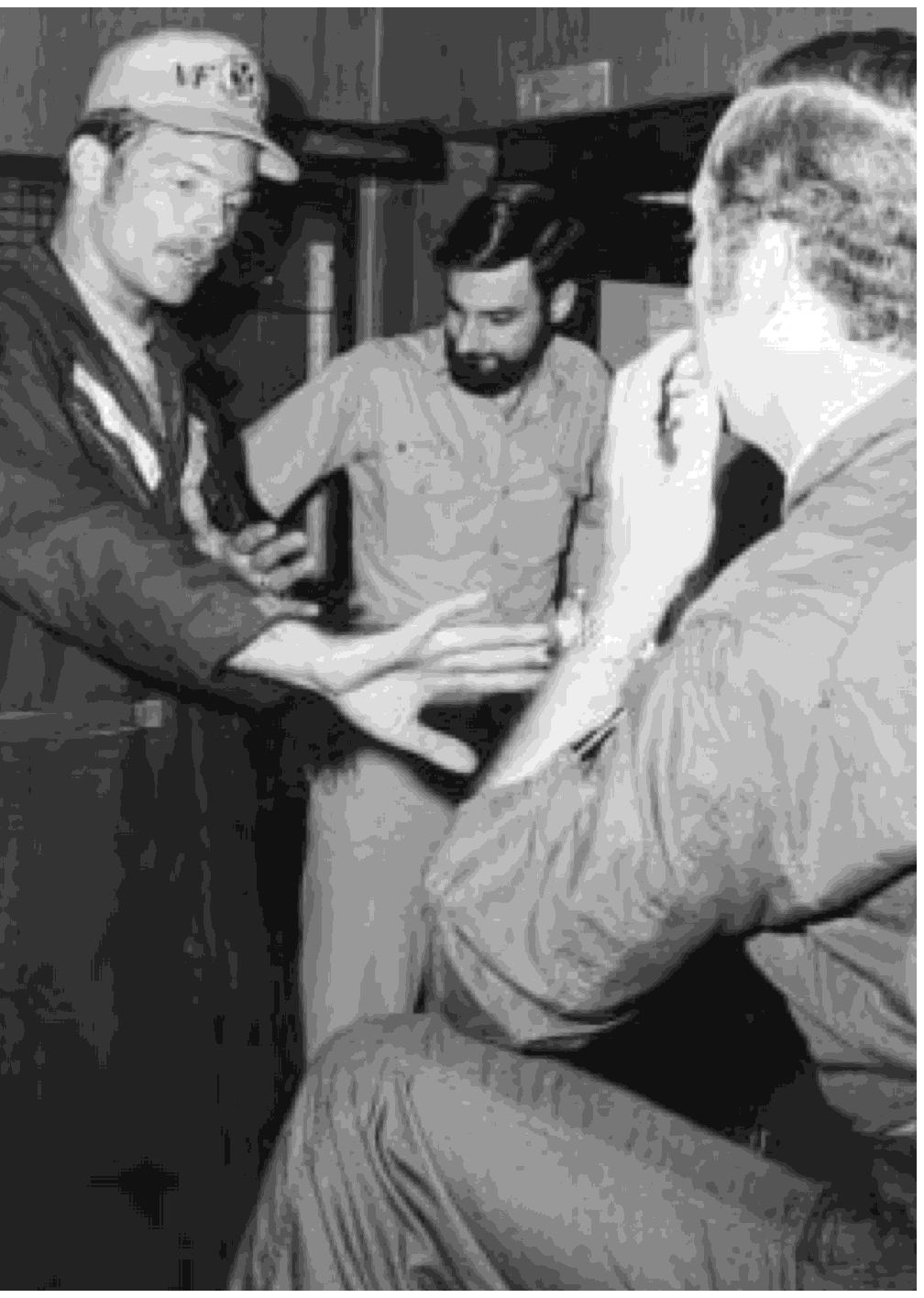
294
UNITED STATES NAVAL AVIATION
1910-1995
1972-Contin ued
IT Dose of VF-92 explains MiG manuever 1151760
region embracing Haiphong north to the Chinese bor-
der. In all, 173 attack sorties were flown in this region
this day, although another 62 were directed into SVN
in continuing support of allied forces there.
It was the most intensified air-to-air combat day of
the entire war. Navy flyers shot down eight MiGs. An
F-4 Phantom II, from VF-96 on board
Constellation,
while engaged in aerial combat over Haiphong shot
down three MiGs for the first triple downing of enemy
MiGs by one plane during the war. Lieutenant Randall
H. Cunningham was the pilot and Lieutenant (jg)
William P. Driscoll was the RIO of the F-4. These three
MiG downings, coupled with their 19 January and 8
May downing of two MiGs, made them the first MiG
aces of the Vietnam War. Three other kills were scored
by planes of VF-96 and one by VF-92 off
Constellation
and one by VF-51 off
Coral Sea.
During the five and one-half month period of
Linebacker I, the Navy contributed more than 60 per-
cent of the total sorties in NVN, with 60 percent of this
effort in the "panhandle", the area between Hanoi and
the DMZ. Tactical air operations were most intense
during the July-September quarter with 12,865 naval
sorties flown. Most attack sorties in NVN fell into two
classes-armed reconnaissance and strike. The former
was directed usually against targets of opportunity
within three main areas-near Hanoi, Haiphong and
the Chinese border. Strike operations were pre planned
and usually directed at fixed targets. Most types of
fixed targets, not associated with armed reconnais-
sance, required approval by the Commander-in-Chief,
Pacific, or by the Joint Chiefs of Staff, prior to attack.
Principal Navy aircraft were the A-7 and A-6, which
accounted for roughly 60 and 15 percent of the Navy's
attack sorties, respectively. About 25 percent of the
Navy's effort was at night. Carriers participating in the
initial May-June operations from Yankee Station were
Constellation, Coral Sea, Hancock, Kitty Hawk,
Midway
and
Saratoga.
10 May
Commander, Naval Air Systems Command,
promulgated a plan for management of advanced pro-
totype development and demonstration of a thrust-
augmented wing Attack Plane-Fighter Vertical/Short
Takeoff and Landing aircraft. A prototype develop-
ment manager was to be established under the Deputy
Commander for Plans and Programs and was to be
assisted by a small cadre of management and technical
personnel located in the Assistant Commander for
Research and Technology's organization and at the
contractor's facility.
11 May
Naval aircraft flying from
Coral Sea, Midway,
Kitty Hawk
and
Constellation
laid additional mine fields
in the remaining ports of significance in NVN- Thanh
Hoa, Dong Hoi, Vinh, Hon Gai, Quang Khe and Cam
Pha as well as the Haiphong approaches. This early
mining was not confined solely to the seven principal
ports. Other locations were also seeded early in the
campaign, including the Cua Sot, Cap Mui Ron, and
the river mouths, Cua Day and Cua Lac Giang, south of
Don Son and the Haiphong port complex.
12 May
The 72-hour delay arming time on the initial
mines laid at Haiphong was up at 120900H Vietnam
time. Nine ships at Haiphong had taken advantage of
the grace period to depart the port. Twenty-seven
ships remained. Both Soviet and Soviet-bloc ships
headed for Haiphong at the time had diverted to dif-
ferent destinations, thus avoiding a direct confronta-
tion with the mine fields.
13 May
CH-53 and CH-46 helicopters of HMM-l64
aboard
Okinawa
airlifted 1,000 South Vietnamese
Marines from SVN's 369th Marine Corps Brigade from
a landing zone near Hue to an area 24 miles north-
west of the city behind NVN lines.
 |
16 |
 |